Potential Space as another Mental Model
Working in the tech industry means transforming uncertainty into its opposite. While a drastic simplification it generally holds true, because what we do is solve problems and if the process of doing so wouldn’t be littered with unknowns there wouldn’t be anything to solve in the first place.
But that means we have to get a handle on uncertainty and for that, we developed a whole zoo of approaches, processes, and models. While they all address the same thing, uncertainty, I somehow miss a discussion of the underlying principle. I believe there is something to be gained if we have a look under the hood and start from the fundamentals.
And that is what this text is about. Exploring the landscape of uncertainty teams face.
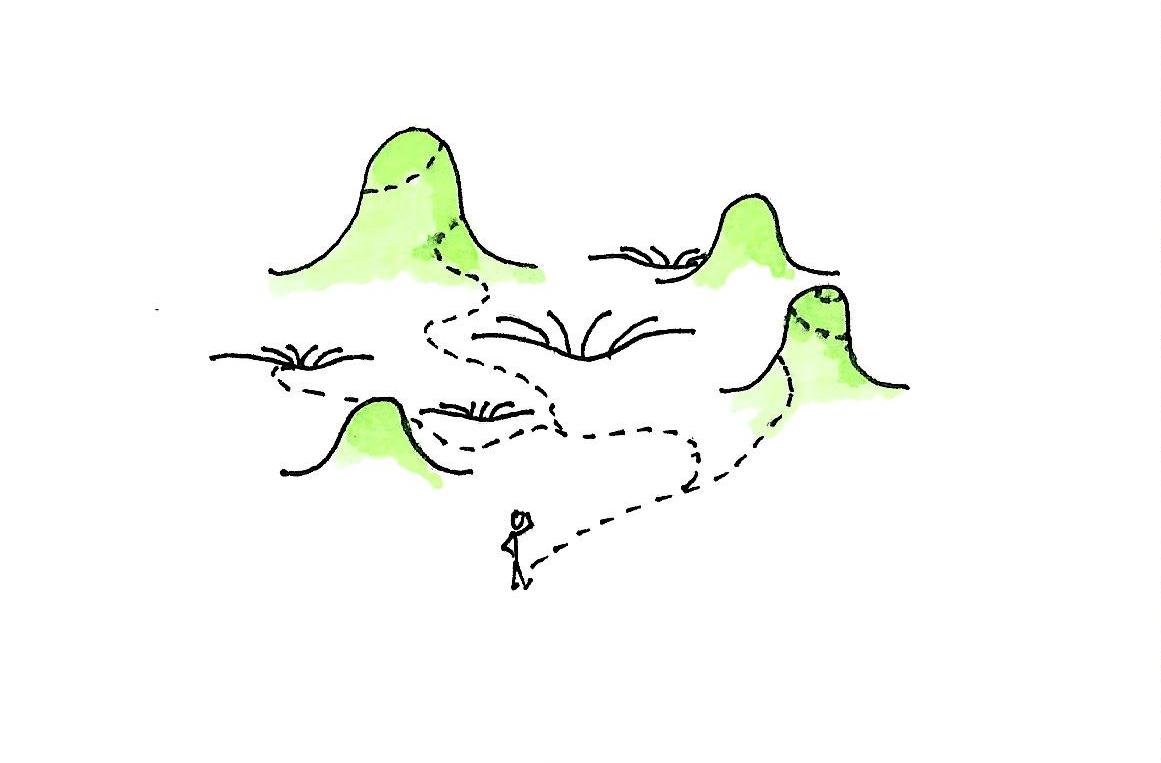
Every time we form a team or start a new project we look at a space full of potential solutions and all the possible paths towards them. We are confronted with a potential space or in other words a lot of uncertainty. Imagine the following scenario. Your company starts a new product and you are part of the team making it happen. You are all excited, you meet for the first time and immediately start to exchange ideas. The air is vibrating with creativity and potential. From here, there are countless paths forward but the geography isn’t fixed. It reacts to the decisions you make and the things you learn. Today’s solution X looks great and you agree that using process Y is the right path. A couple of days or weeks later you realize that Y isn’t working for you and X makes no sense. But hey, new solutions emerged and you adapt the way you work.
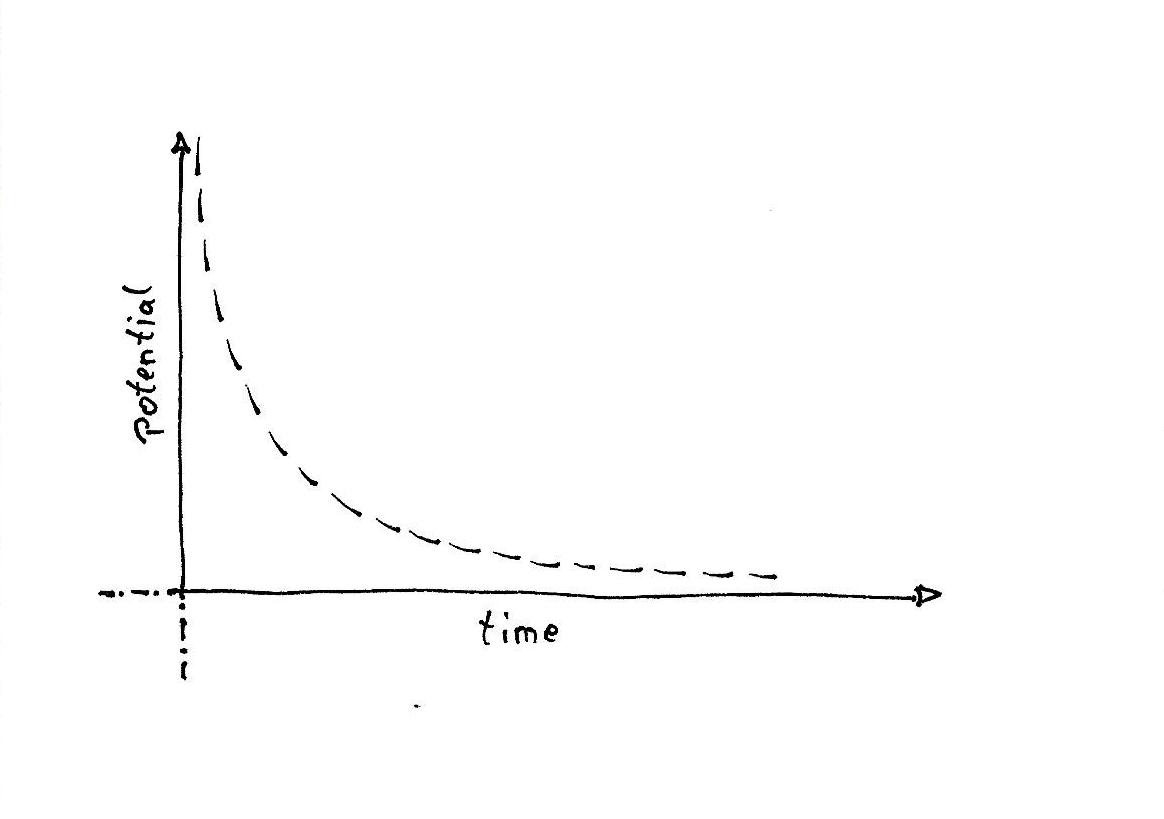
Gradually potentials flatten out or disappear altogether and the path ahead becomes more clear. We are starting to get into a phase where we can make more and more accurate predictions about the near-term future.
Or so you would think, but in my experience what actually happens looks more like this:
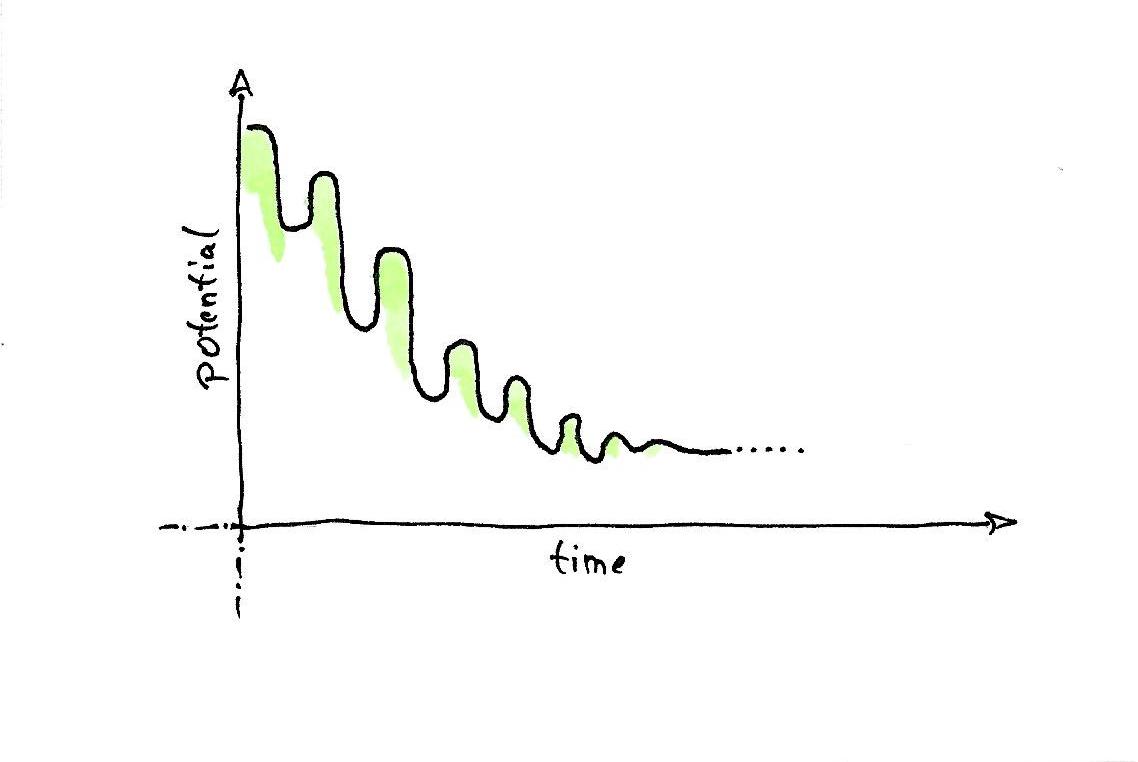
You learn something, move ahead, and realize you had a misunderstanding, all comes a bit chaotic again, but just a bit less so. You move up some hills to realize there is a better one down the left or you dig yourself into a hole just to find out in time and climb out. Together with you, potential space is changing all the time, but sure enough, the problem becomes more clear.
Because people, like me, better remember a few catchy words instead of a lengthy description let’s try the following generalization:
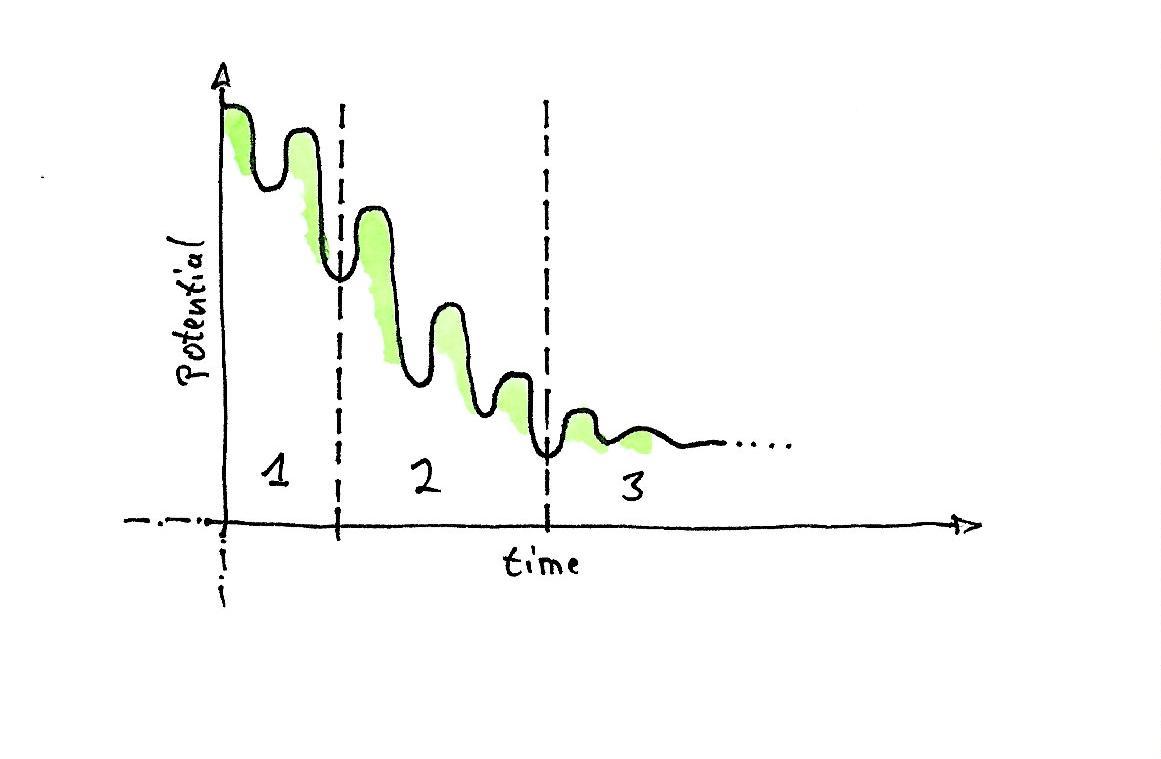
In the beginning, we are in the (1) chaos phase. We come in with our experiences and ideas but a lot is unknown. Over time the energy of potential space is going down and we (2) transition. Finally, we end up with a clear(er) path forward and start (3) to solve the problem.
And so it should continue, right? For a while, maybe. Some teams stay in this space for a long time but usually, your surroundings change while you do your work, and the problem space shifts.
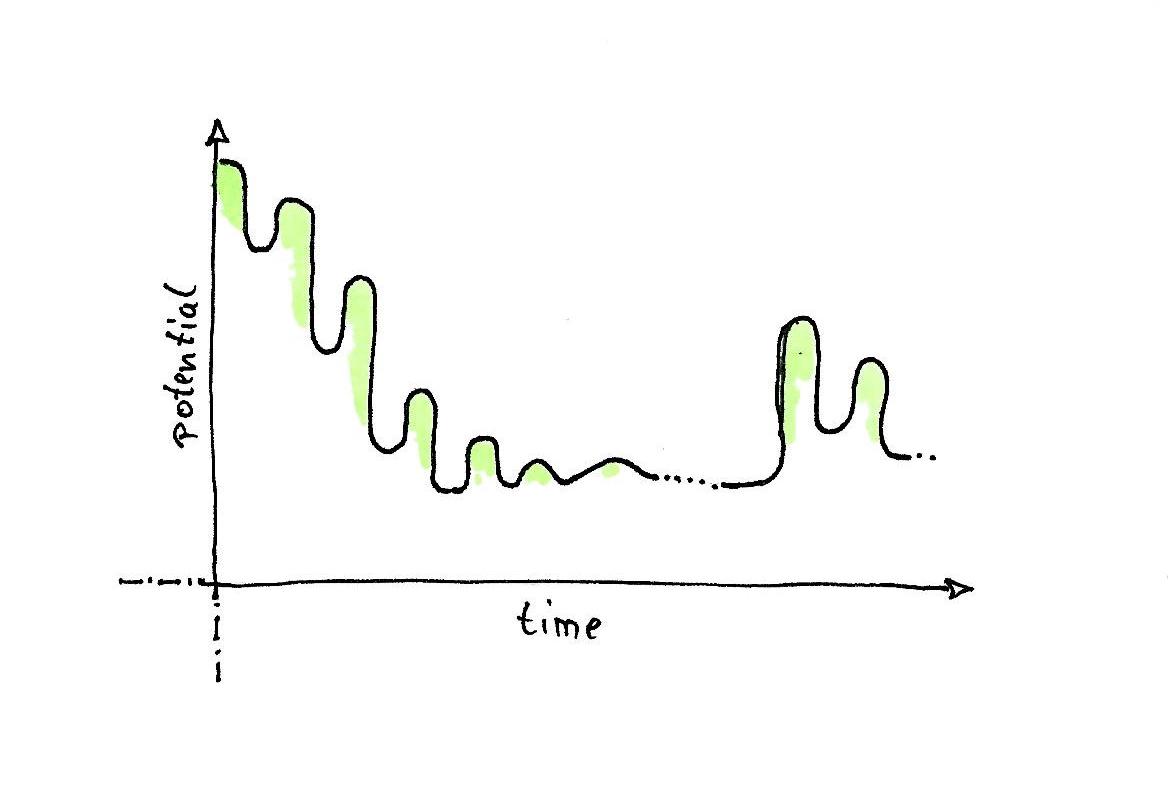
People leave the team and you get new colleagues with new ideas or your team’s responsibilities change because of a reorganization. One of a million things can happen and all of a sudden potential space is becoming more dynamic again and the stabilization process starts all over.
But of course, it is not all rosy out there. Stabilization is not guaranteed.
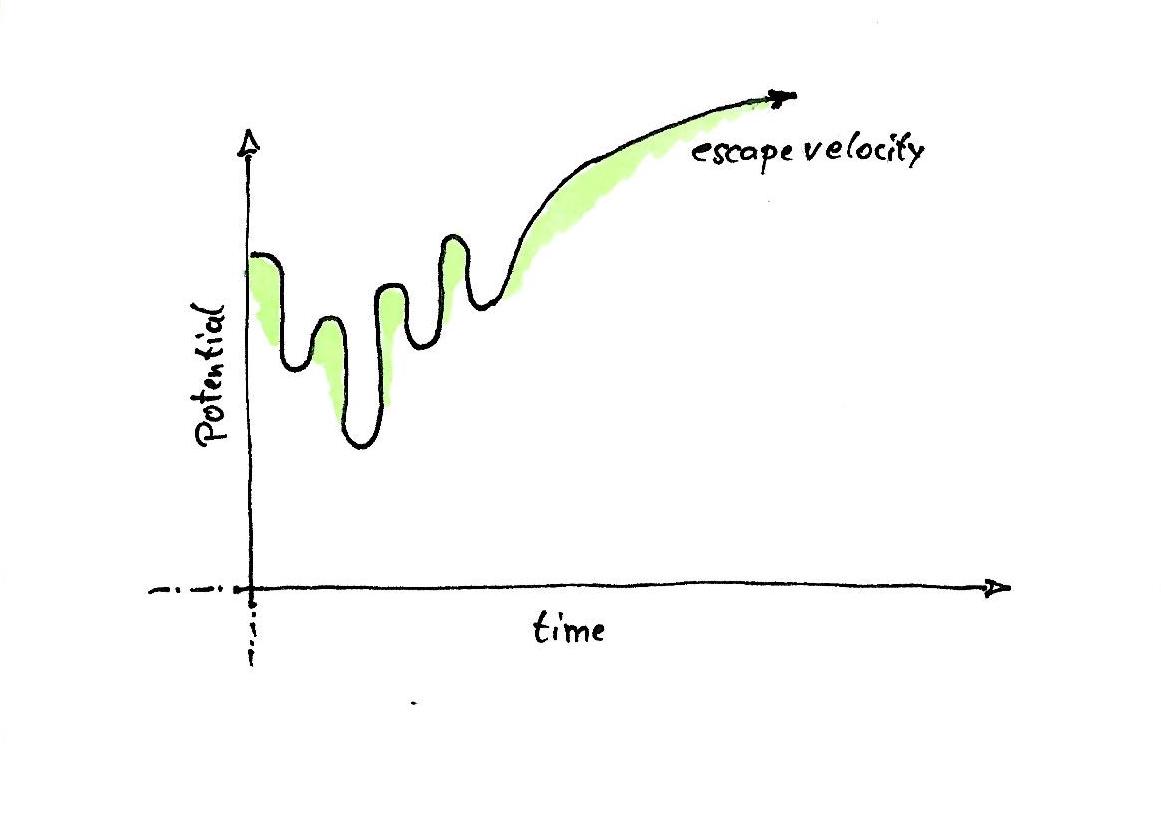
Best case, you have a successful journey and produce something that solves the problem. But there is always the potential to reach something I would describe as escape velocity. Instead of dissipating the dynamics of that space, your group starts to jump around like in a pinball machine and gather more and more energy. You go up that hill and down into this hole but somehow you don’t learn how to navigate. All paths seem random and the terrain becomes more dynamic. Your product makes no meaningful progress and people within and without start to lose trust. Do that long enough and you will reach a point where you just get thrown out of that space. Your product gets canceled or your team dissolves.
But at least it ends. There is another state which is even worse I believe.
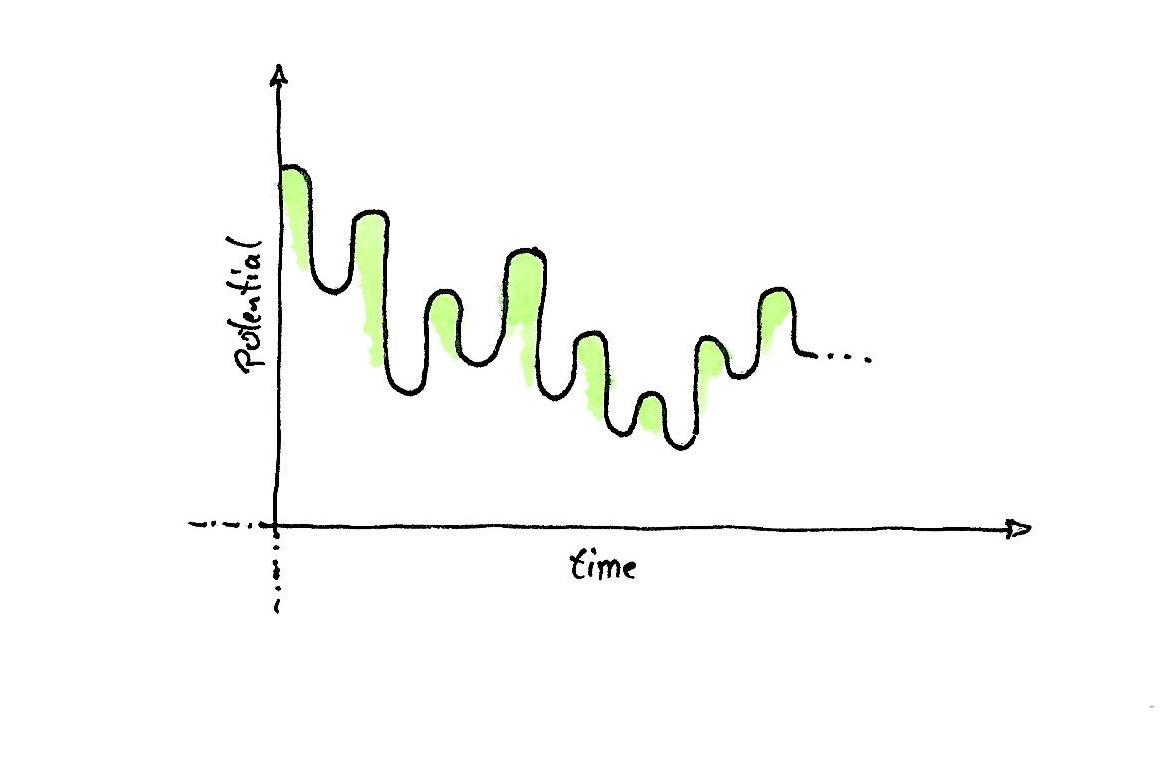
You are stuck in an ever-changing place and you never really solve anything. You keep chaos at bay but finding a target seems impossible. I assume eventually someone or something will pull the plug but in the meantime, your group creeps around not knowing what it does.
Either way, both results are something nobody really wants because they represent wasted effort. For one, because you as a group could have solved an actual problem. For another, the problem you tried to solve might still be worth solving if done right.
How do we increase our chances to end up in the first state then? By understanding the space we inhabit as a group as quickly and thoroughly as possible. That includes the problem but also the team and how it is embedded in the overarching organization. All those factors define the potential space and need investigation. That has implications on:
- leadership
- team processes
- team structures
- career path decisions and what state you like to work in
- etc.
Something else to keep in mind is that a team usually faces several problems at any point in time. It is moving in multiple potential spaces. While you figure out how you work together, you discover the goal, design, engineering, operations, and so much more. It is the responsibility of that team to make sure they make progress on any of those dimensions.
To keep this text somewhat focussed I will stop here, for now, and summarize. When forming a team or when starting a new project what you do is enter a new terrain with many potential paths towards a goal that isn’t yet clearly defined. What you therefore do is make your way through a potential space. When you first start all is chaotic and new, but over time your transition into a phase where you get to know your colleagues and the terrain you are on. Finally, after a lot of back and forth, you made it. Not to your destination but into your journey.
Do you think that makes sense? Does this mental framework bring something new to the table? Let me know.
Read on
You found a typo or some other mistake I made in this text? All articles can be changed here. If you want to exchange ideas then simply drop me a message at contact@paulheymann.de.